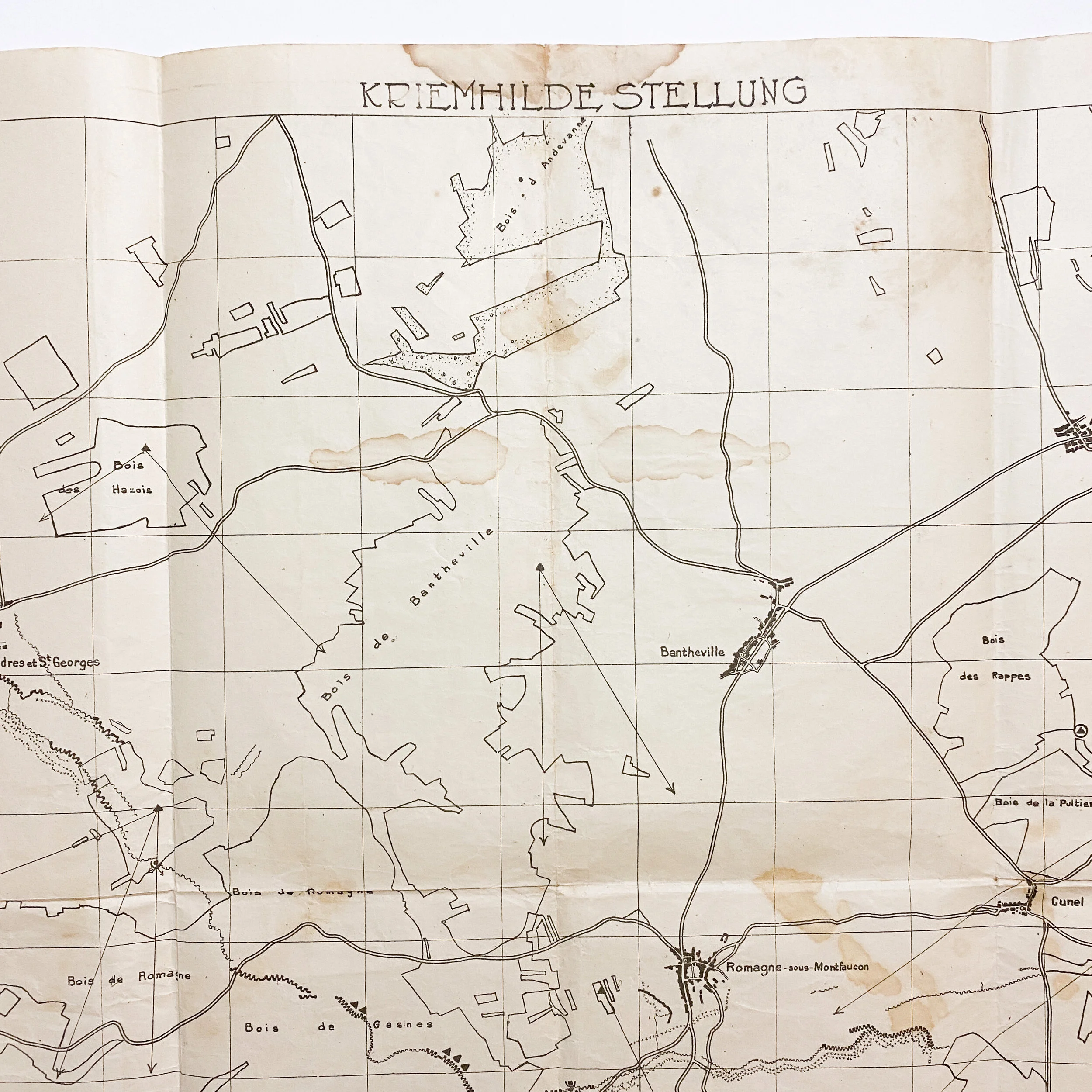1918 Kriemhilde Stellung Trench Map of Sergeant Judson O. ‘Battery B. 13th Field Artillery









1918 Kriemhilde Stellung Trench Map of Sergeant Judson O. ‘Battery B. 13th Field Artillery
This is an original AEF trench map for the AEF commanders in the field. This map is dated to September 29th, 1918 (Printed by G-2-C 15). The map was printed by the US Army to shows the known positions of the German (enemy) and known observations posts. This map came from the bring back collection of Corporal Judson O. Serving with Battery B. 13th Field Artillery. During his service with the 13th F.A. he brought back 14 trench maps in total that where use by the US and French forces. This is a nice well presented trench map in truly excellent condition!
The Kriemhilde Stellung - the position of a German Defensive line during the Meuse Argonne Offensive.
Battle Details:
The Meuse Battles stared on September 26th and lasted until November 11th of 1918.
The French Fourth Army and the American First Army attacked on a front from Moronvilliers to the Meuse on 26 September 1918 at 5:30 a.m., after a three-hour bombardment. American troops quickly captured Malancourt, Bethincourt and Forges on the left bank of the Meuse and by midday the Americans had reached Gercourt, Cuisy, the southern part of Montfaucon and Cheppy. German troops were able to repulse American attacks on Montfaucon ridge, until it was outflanked to the south and Montfaucon was surrounded. German counter-attacks from 27–28 September slowed the American advance but Ivoiry and Epinon-Tille were captured, then Montfaucon ridge with 8,000 prisoners and 100 guns. On the right bank of the Meuse, a combined Franco-American force under American command, took Brabant, Haumont, Bois d'Haumont and Bois des Caures and then crossed the front line of February 1916. By November, c. 20,000 prisoners, c. 150 guns, c. 1,000 trench mortars and several thousand machine-guns had been captured. A German retreat began and continued until the Armistice.[
The Meuse–Argonne offensive (also known as Battles of the Meuse–Argonne and the Meuse–Argonne campaign) was a major part of the final Allied offensive of World War I that stretched along the entire Western Front. It was fought from September 26, 1918 until the Armistice of November 11, 1918, a total of 47 days. The Meuse–Argonne offensive was the largest in United States military history, involving 1.2 million American soldiers. It is the deadliest battle in American history, resulting in over 350,000 casualties including 28,000 German lives, 26,277 American lives and an unknown number of French lives. U.S. losses were exacerbated by the inexperience of many of the troops, the tactics used during the early phases of the operation and the widespread onset of the influenza outbreak called the "Spanish Flu”.
Meuse–Argonne was the principal engagement of the American Expeditionary Force (AEF) during World War I. It was one of a series of Allied attacks known as the Hundred Days Offensive, which brought the war to an end. It was the largest and bloodiest operation of World War I for the AEF even if, given the scale of other battles on the Western Front, its size was limited and the operation itself secondary as it was far from the main offensive axis.
The Meuse–Argonne battle was the largest frontline commitment of troops by the U.S. Army in World War I, and also its deadliest. Command was coordinated, with some U.S. troops (e.g. the Buffalo Soldiers of the 92nd Division and the 93rd Division) attached and serving under French command (e.g. XVII Corps during the second phase).